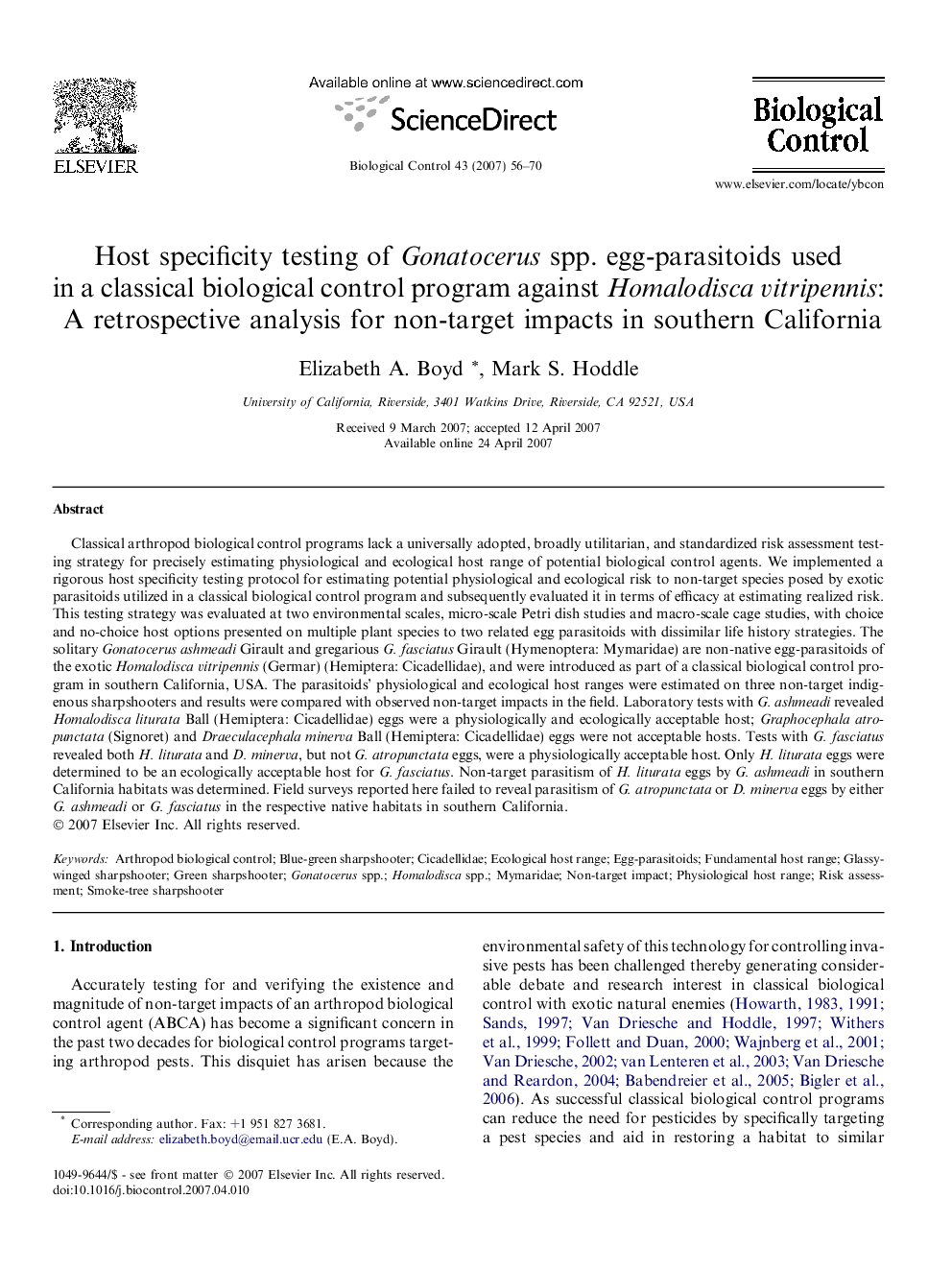| Article ID | Journal | Published Year | Pages | File Type |
|---|---|---|---|---|
| 4505173 | Biological Control | 2007 | 15 Pages |
Classical arthropod biological control programs lack a universally adopted, broadly utilitarian, and standardized risk assessment testing strategy for precisely estimating physiological and ecological host range of potential biological control agents. We implemented a rigorous host specificity testing protocol for estimating potential physiological and ecological risk to non-target species posed by exotic parasitoids utilized in a classical biological control program and subsequently evaluated it in terms of efficacy at estimating realized risk. This testing strategy was evaluated at two environmental scales, micro-scale Petri dish studies and macro-scale cage studies, with choice and no-choice host options presented on multiple plant species to two related egg parasitoids with dissimilar life history strategies. The solitary Gonatocerus ashmeadi Girault and gregarious G. fasciatus Girault (Hymenoptera: Mymaridae) are non-native egg-parasitoids of the exotic Homalodisca vitripennis (Germar) (Hemiptera: Cicadellidae), and were introduced as part of a classical biological control program in southern California, USA. The parasitoids’ physiological and ecological host ranges were estimated on three non-target indigenous sharpshooters and results were compared with observed non-target impacts in the field. Laboratory tests with G. ashmeadi revealed Homalodisca liturata Ball (Hemiptera: Cicadellidae) eggs were a physiologically and ecologically acceptable host; Graphocephala atropunctata (Signoret) and Draeculacephala minerva Ball (Hemiptera: Cicadellidae) eggs were not acceptable hosts. Tests with G. fasciatus revealed both H. liturata and D. minerva, but not G. atropunctata eggs, were a physiologically acceptable host. Only H. liturata eggs were determined to be an ecologically acceptable host for G. fasciatus. Non-target parasitism of H. liturata eggs by G. ashmeadi in southern California habitats was determined. Field surveys reported here failed to reveal parasitism of G. atropunctata or D. minerva eggs by either G. ashmeadi or G. fasciatus in the respective native habitats in southern California.
